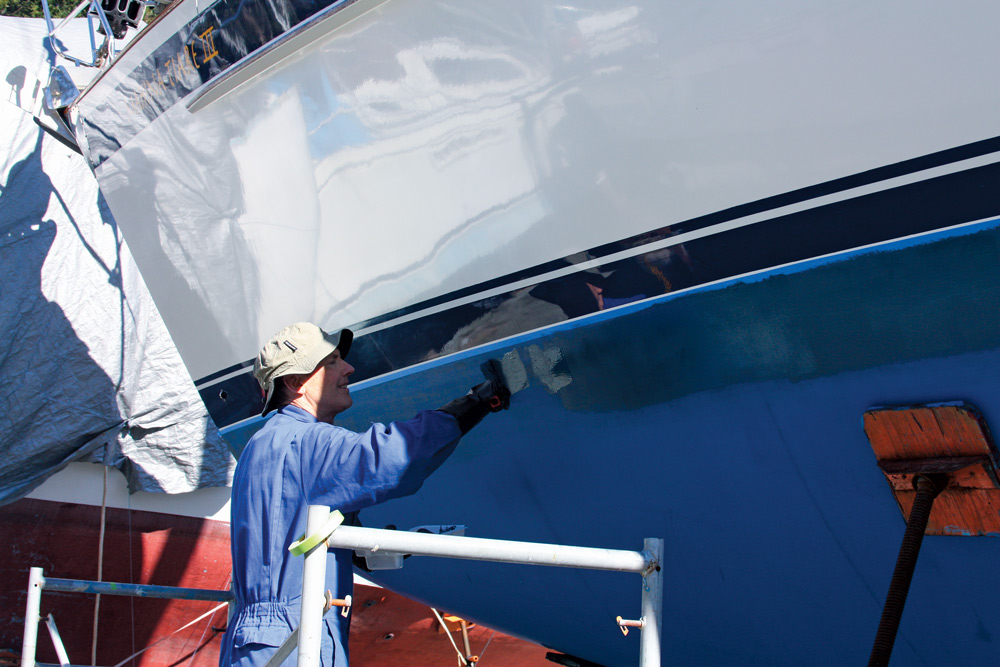Illustrated guide to fitting out
Bottom of it

Few jobs strike fear into the hearts of boat owners than those dealing with bottom maintenance. The good news is that boatyards take such jobs—which are messy, challenging and generally unpleasant—in stride and you can certainly pay to have them done. But DIY savvy boatowners may want to tackle getting their boat’s bottom in shape for sailing season themselves.
If it’s been awhile since the bottom has been painted, it may be time to consider a self-polishing paint. For boats sailing in salt water, a paint such as Interlux’s Micron 66 actually gets smoother with use and won’t need recoating every spring. Just give it a good cleaning. When it does need to be recoated, you don’t have to sand it all off. The bottom can simply be cleaned and scuffed and a new coat applied. Sailors in fresh water could use the company’s Micron CSC HS paint, which provides similar benefits, along with low VOC emissions, and is appropriate for fresh water.
Self-polishing paints will save a lot of maintenance for most cruisers, but racing sailors, or those for whom a very smooth bottom is a priority, will likely want to use a hard paint such as Interlux’s VC Offshore or VC Offshore Regatta. Sanding and polishing will lead to a highly low-friction bottom, but the paint will need to be reapplied annually, especially as paint wears with regular bottom cleanings.
Regardless of the kind of paint on the bottom, it’s crucial that it is in excellent condition prior to launch, as it’s only going to wear throughout the season.

Comments